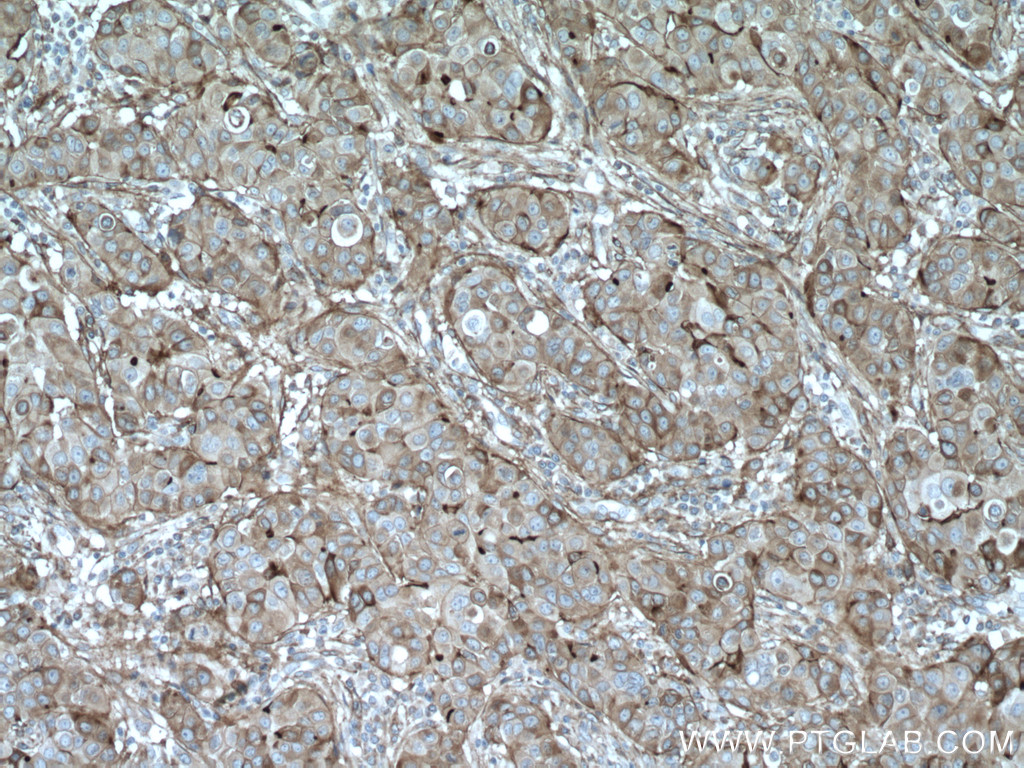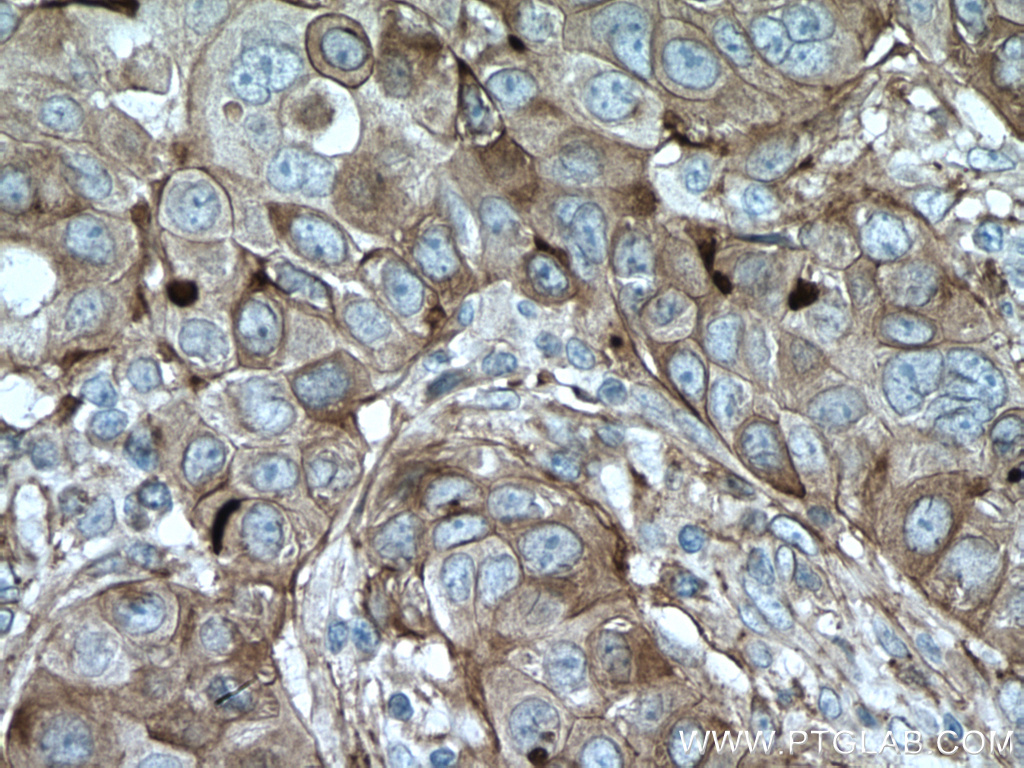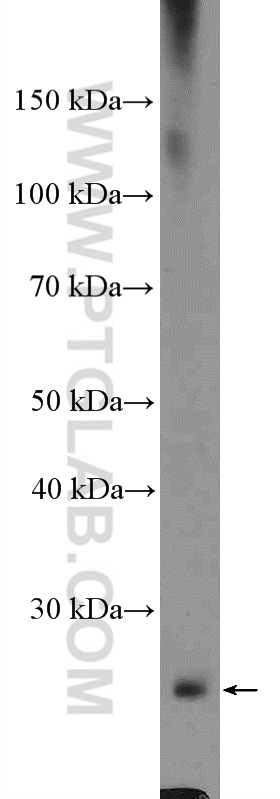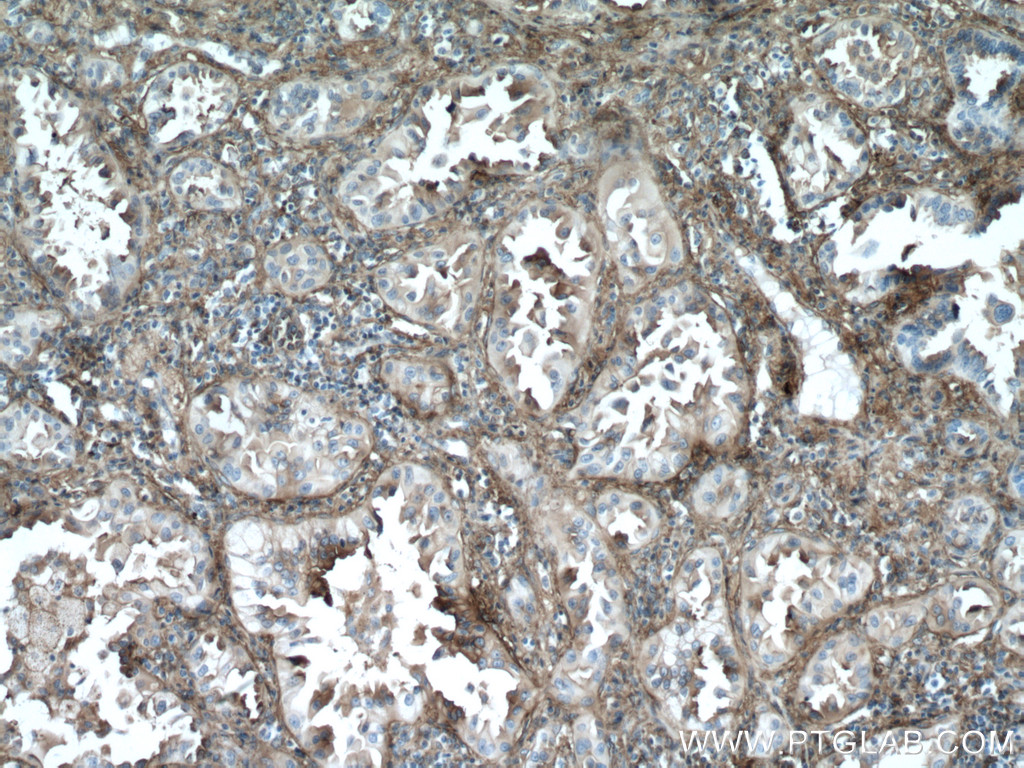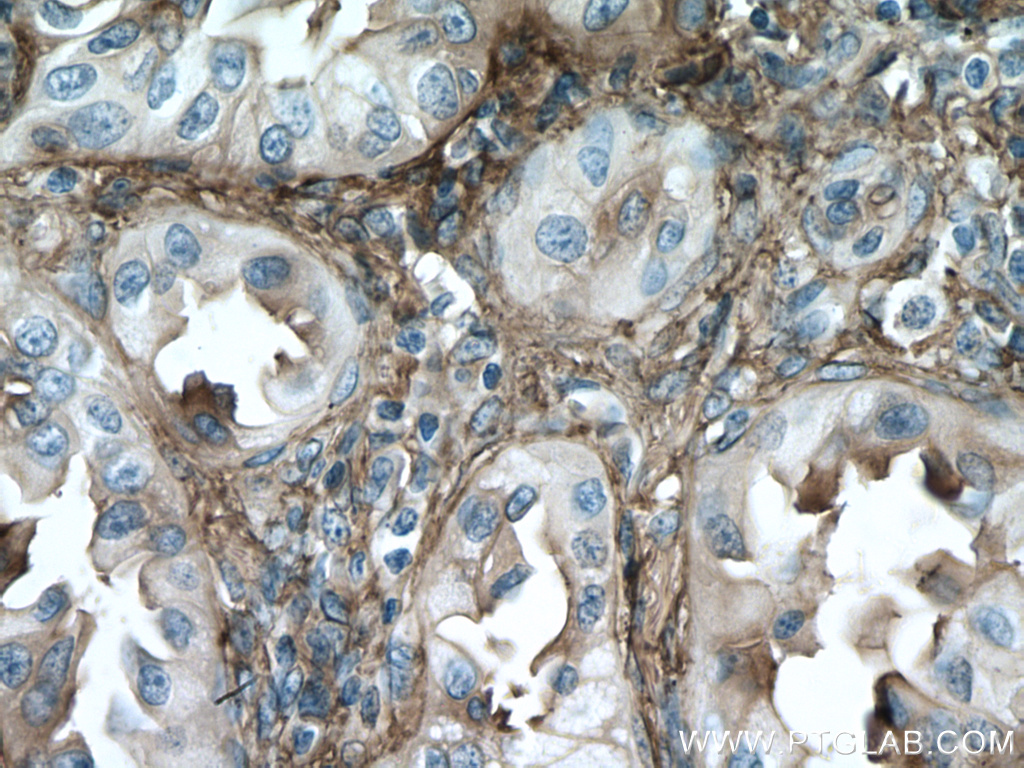验证数据展示
经过测试的应用
| Positive WB detected in | COLO 320 cells |
| Positive IHC detected in | human breast cancer tissue, human lung cancer tissue Note: suggested antigen retrieval with TE buffer pH 9.0; (*) Alternatively, antigen retrieval may be performed with citrate buffer pH 6.0 |
推荐稀释比
| 应用 | 推荐稀释比 |
|---|---|
| Western Blot (WB) | WB : 1:500-1:3000 |
| Immunohistochemistry (IHC) | IHC : 1:200-1:800 |
| It is recommended that this reagent should be titrated in each testing system to obtain optimal results. | |
| Sample-dependent, Check data in validation data gallery. | |
发表文章中的应用
| WB | See 3 publications below |
| IHC | See 1 publications below |
产品信息
26735-1-AP targets CYBRD1 in WB, IHC, ELISA applications and shows reactivity with human samples.
| 经测试应用 | WB, IHC, ELISA Application Description |
| 文献引用应用 | WB, IHC |
| 经测试反应性 | human |
| 文献引用反应性 | human, mouse, pig |
| 免疫原 | CYBRD1 fusion protein Ag24968 种属同源性预测 |
| 宿主/亚型 | Rabbit / IgG |
| 抗体类别 | Polyclonal |
| 产品类型 | Antibody |
| 全称 | cytochrome b reductase 1 |
| 别名 | CYBRD1, cytochrome b reductase 1, DCYTB, Duodenal cytochrome b, Ferric chelate reductase 3, FRRS3 |
| 观测分子量 | 25 kDa |
| GenBank蛋白编号 | BC065290 |
| 基因名称 | CYBRD1 |
| Gene ID (NCBI) | 79901 |
| RRID | AB_2880618 |
| 偶联类型 | Unconjugated |
| 形式 | Liquid |
| 纯化方式 | Antigen affinity purification |
| UNIPROT ID | Q53TN4 |
| 储存缓冲液 | PBS with 0.02% sodium azide and 50% glycerol , pH 7.3 |
| 储存条件 | Store at -20°C. Stable for one year after shipment. Aliquoting is unnecessary for -20oC storage. |
实验方案
| Product Specific Protocols | |
|---|---|
| WB protocol for CYBRD1 antibody 26735-1-AP | Download protocol |
| IHC protocol for CYBRD1 antibody 26735-1-AP | Download protocol |
| Standard Protocols | |
|---|---|
| Click here to view our Standard Protocols |
发表文章
| Species | Application | Title |
|---|---|---|
Metallomics Tolerable upper intake level of iron damages the intestine and alters the intestinal flora in weaned piglets. | ||
Biol Trace Elem Res Chronic Psychological Stress Disrupts Iron Metabolism and Enhances Hepatic Mitochondrial Function in Mice. | ||
PeerJ Identification of potential genes in upper tract urothelial carcinoma using next-generation sequencing with bioinformatics and in vitro analyses. |
